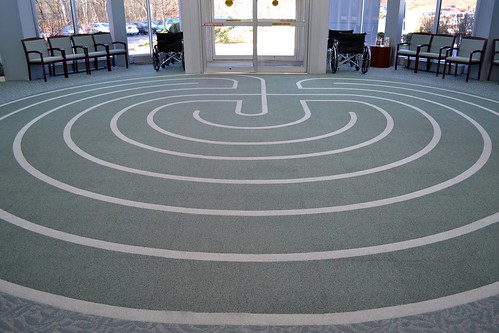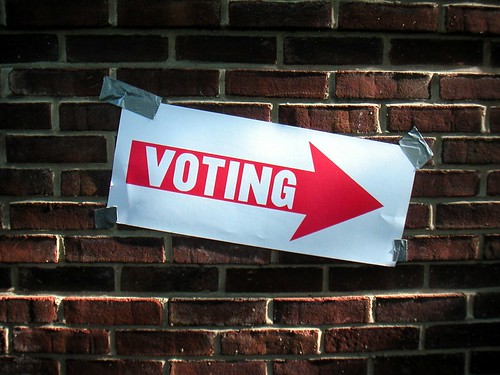 Thanksgiving is a day to eat turkey, stuffing, and pumpkin pie. But it is also a time to give thanks for all that we have in our world. Sometimes, that aspect appears to get lost within the chaos that can be the impending holiday season. We now have Black Friday and Cyber Monday. Did giving thanks get lost in the retail mix?
Thanksgiving is a day to eat turkey, stuffing, and pumpkin pie. But it is also a time to give thanks for all that we have in our world. Sometimes, that aspect appears to get lost within the chaos that can be the impending holiday season. We now have Black Friday and Cyber Monday. Did giving thanks get lost in the retail mix?
I hope that Thanksgiving has given you the opportunity to spend time with those whom you love and cherish. While you are recovering from Thanksgiving, grab a fork and dig in to the latest episode of the Rhubarb Report!
 Self care always sounds like a good idea in principle – until it starts to impact your bottom line as a clinician. That may sound a little outrageous at first, but in harsh reality (and given the state of incentives in our reimbursement structure) it isn’t far from the truth. As much as health care providers espouse beliefs of “wanting the patient to become independent”, independence ultimately means no visits and no reimbursement. Clinicians straddle a fine line between these two conflicting issues of “independence” and “economic survival”.
Self care always sounds like a good idea in principle – until it starts to impact your bottom line as a clinician. That may sound a little outrageous at first, but in harsh reality (and given the state of incentives in our reimbursement structure) it isn’t far from the truth. As much as health care providers espouse beliefs of “wanting the patient to become independent”, independence ultimately means no visits and no reimbursement. Clinicians straddle a fine line between these two conflicting issues of “independence” and “economic survival”.
The issue of self care is an intriguing discussion with other clinicians. If you delve deep enough, self care is almost perceived as a threat.
The question is this: is self care a threat to traditional health care as we know it, or is it the next great disruptive innovation in health care?
 Austin was on the world stage this past weekend. Formula One arrived at our front door step, and the world watched to see if the United States could somehow find a way to embrace F1. Would Austin be the right place to do so? It is odd to have a “world championship” without having a premiere event in one of the world’s most important markets, yet this was to be the first grand prix on US soil since 2007.
Austin was on the world stage this past weekend. Formula One arrived at our front door step, and the world watched to see if the United States could somehow find a way to embrace F1. Would Austin be the right place to do so? It is odd to have a “world championship” without having a premiere event in one of the world’s most important markets, yet this was to be the first grand prix on US soil since 2007.
On the Wednesday before the race, former F1 driver (and current BBC commentator) John Watson noted that the Circuit Of The Americas was the first US course deserving of a Formula One race since Watkins Glen. Hallelujah, John. The last F1 race at Watkins Glen was 1980, so it has been quite some time since F1 has been successful in the US.
Until now.
Austin was ready to step onto the world stage, and Formula One was ready for Austin. It was a match made in F1 heaven.
 In the Industrial Age, information was scarce, expensive, institutionally-oriented, and designed for consumption. This certainly sounds like traditional health care to me. The antiquated gatekeeper model of care that accompanies it is built on paternalism, turf battles and legalized monopolies.
In the Industrial Age, information was scarce, expensive, institutionally-oriented, and designed for consumption. This certainly sounds like traditional health care to me. The antiquated gatekeeper model of care that accompanies it is built on paternalism, turf battles and legalized monopolies.
But the times are changing. Welcome to the Information Age, where information is abundant, cheap, personally-oriented, and designed for participation. It is a time when patients are more than capable of making informed decisions about not only their health care but their choice of provider as well.
Sadly, the health care system remains firmly rooted in the Industrial Age. It is time for health care to move into the Information Age, to catch up with patients and provide them with truly patient-centered care.
 This past week was one crazy week. In case you missed it, there was a Presidential election in the United States this week. The voters spoke.
This past week was one crazy week. In case you missed it, there was a Presidential election in the United States this week. The voters spoke.
But with that always comes a day or two of commentary. The winning side is ready to move forward for the next 4 years, and the losing side bemoans it. Sadly, this year seemed to have far more fear-driven commentary in the days post-election. Maybe it’s just because people now discuss their thoughts in the realm of social media, and we all know how the digital world tends to make some far more “verbal” than they would be in real life. Thanks a bunch, Facebook.
Onwards with Episode 53 of the Rhubarb Report.
 It has become one of the most oft-used and perhaps most hypocritical phrases in health care: patient-centered care. This usually goes hand-in-hand with the concept of patient autonomy. These are two buzz phrases that have lost much of their true meaning.
It has become one of the most oft-used and perhaps most hypocritical phrases in health care: patient-centered care. This usually goes hand-in-hand with the concept of patient autonomy. These are two buzz phrases that have lost much of their true meaning.
Clinicians like to believe that because the patient is the hub of the assessment and treatment paradigm, that this makes the care “patient-centered”. But when you look more closely, patient autonomy is stifled by some subtle (and not-so-subtle) issues. It could be the level of interaction with the patient, the attitudes of the clinician, and even the health care system itself. They all become significant limiters to patient autonomy.
Here are six ways to effectively stifle patient-centered care.
 The day is upon us. Tomorrow, November 6, is Election Day in the United States.
The day is upon us. Tomorrow, November 6, is Election Day in the United States.
As of November 7, we can get back to the tasks at hand, namely getting the country moving in a forward direction. All the diatribes, lies, propaganda, and vitriol will be over – at least for a while. At least we can all hope that is the case, because this election cycle has been downright ugly.
But in the meantime, we have a responsibility. For all that we like to talk about rights and freedoms in this country, the oftentimes-forgotten yet highly important issue is that we also have a responsibility that comes with those rights.
 "Running Injuries: Etiology And Recovery- Based Treatment" (co-author Bridget Clark, PT) appears in the third edition and fourth editions of "Clinical Orthopaedic Rehabilitation: A Team Approach" by Charles Giangarra, MD and Robert C. Manske, PT.
"Running Injuries: Etiology And Recovery- Based Treatment" (co-author Bridget Clark, PT) appears in the third edition and fourth editions of "Clinical Orthopaedic Rehabilitation: A Team Approach" by Charles Giangarra, MD and Robert C. Manske, PT.
 Allan Besselink, PT, DPT, Ph.D., Dip.MDT has a unique voice in the world of sports, education, and health care. Read more about Allan here.
Allan Besselink, PT, DPT, Ph.D., Dip.MDT has a unique voice in the world of sports, education, and health care. Read more about Allan here.
 Top 5 finalist in three categories: "Best Overall Blog", "Best PT Blog" and "Best Advocacy Blog".
Top 5 finalist in three categories: "Best Overall Blog", "Best PT Blog" and "Best Advocacy Blog".